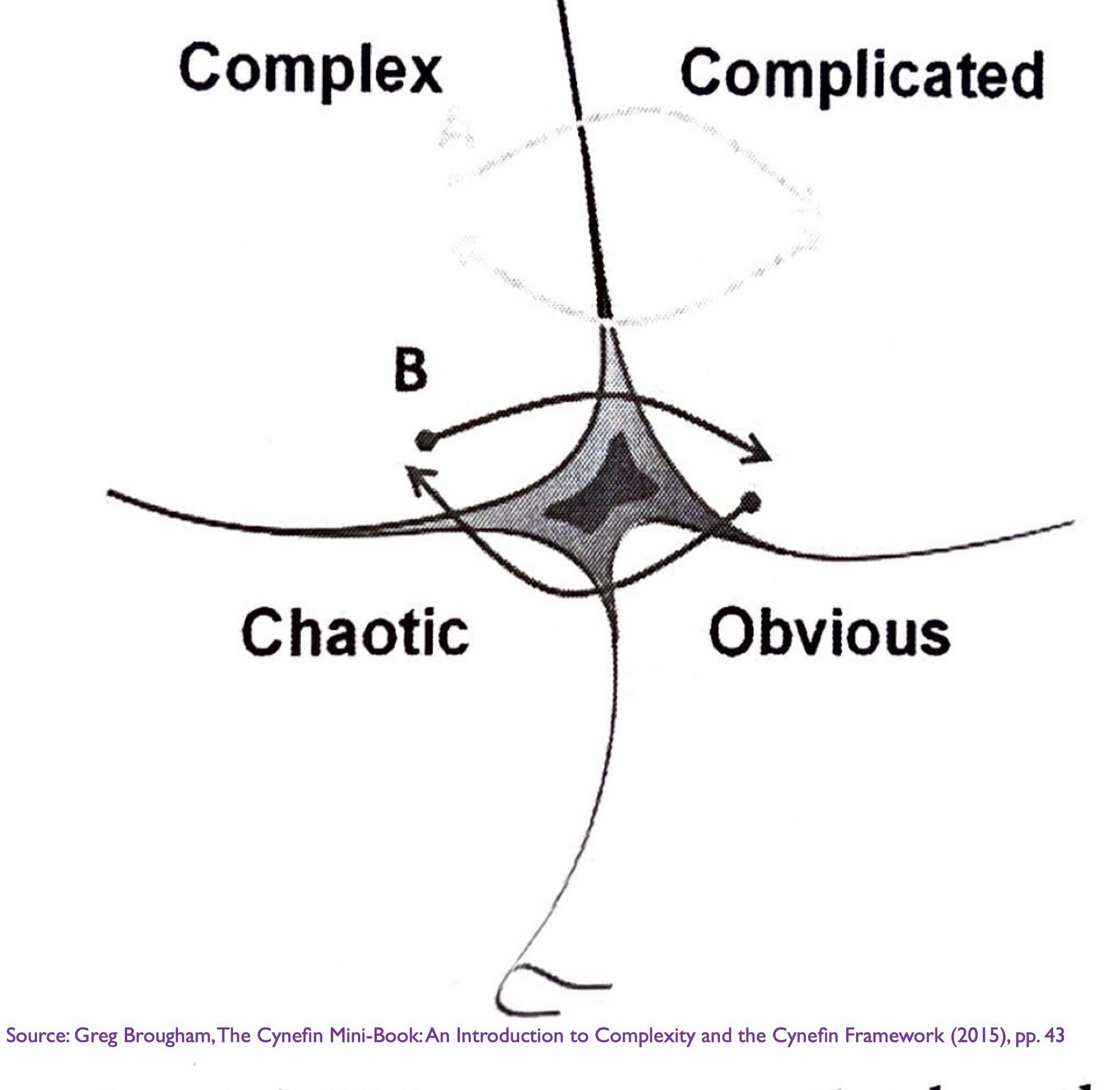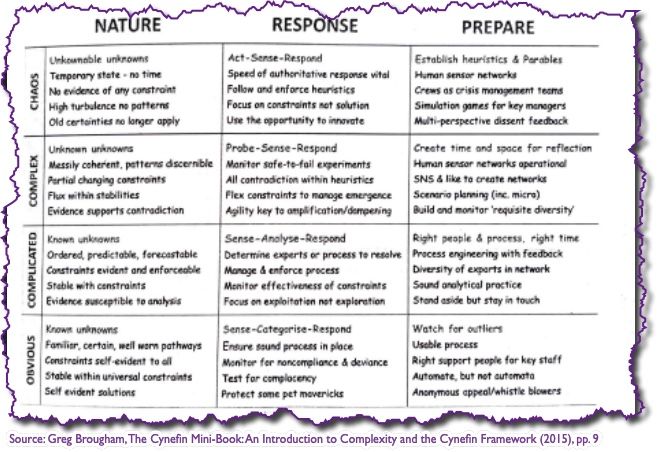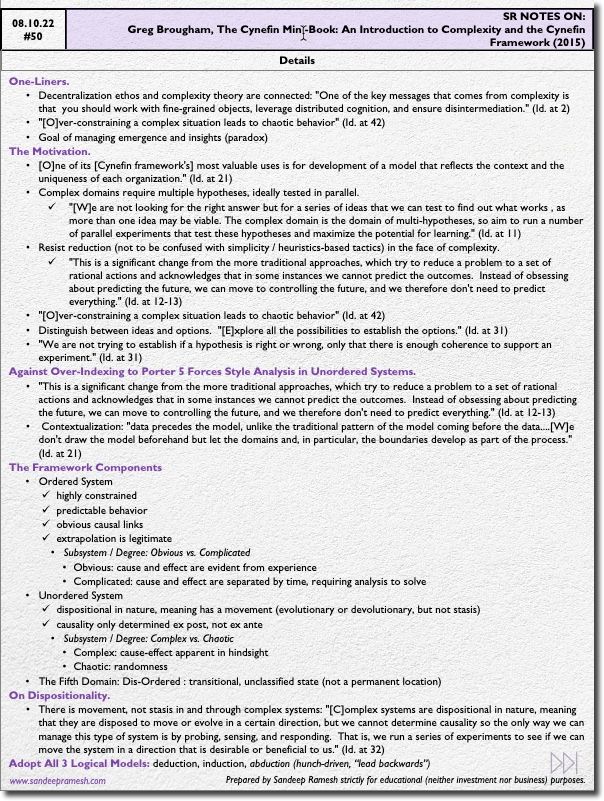Source: Greg Brougham, The Cynefin Mini-Book: An Introduction to Complexity and the Cynefin Framework (2015)
🚨 PSA: if you pronounce "cynefin" phonetically, you'll unwittingly expose yourself as a neophyte. Here to help: https://youtu.be/pwzIzM475eY?t=17
The Main Ideas.
- "[O]ne of its [Cynefin framework's] most valuable uses is for development of a model that reflects the context and the uniqueness of each organization." (Id. at 21)
- Decentralization ethos and complexity theory are connected; the Cynefin Framework allows us a way to understand "where" along the Knightian risk vs. uncertainty (see Field Note 16) we are so that we don't misapply tools & strategies that work in certain ordered domains but not in un-ordered ones.
- Cynefin has connection to Taleb's conceptualizations of Mediocristan vs. Extremistan, Szabo's idea of "quantum thought" (see Field Note 36), which of course germinate from Knight.
- All this is not professorial or theoretical, but brutally pragmatic as it relates to investment risk, specifically the risk of ruin (see, e.g. Field Note 44 on convergent vs. divergent investing)
- Through Line: "over-constraining a complex situation leads to chaotic behavior" (Id. at 42)
The Images.


The Details.
